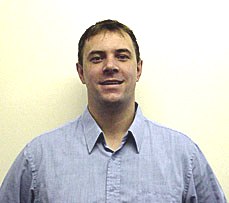
Swimming provision: customer experience is a crucial aspect
Swimming: a fresh perspective
Spencer Moore of the ASA offers an insight into swimming from the perspective of the sport’s governing body and considers the potential impact of a co-ordinated management approach for pool providers.

Swimming provision: customer experience is a crucial aspect
With the general population’s ever-increasing health awareness and need for effective, accessible and inexpensive exercise and fitness activities, swimming and associated aquatic activities continue to be a popular leisure pursuit. There is also mounting focus on the elite perspective of the sport with Olympic champions and 2012 hopefuls such as Tom Daley and Rebecca Adlington becoming household names. Added to the results of a recent nationwide survey from YouGov, which shows that British adults would rather be a world-class swimmer than an athlete or cyclist, the timing has never been better for leisure providers to look closely at their aquatics provision.
Sometimes though it is difficult to see the wood for the trees – how do you know what pool sessions you should be running and when if you don’t know what your customers want? How do you make sure you have enough adequately qualified and trained staff on hand to meet the needs of the paying customer? And what is the magic formula to tie it all together and maximise your available pool time while keeping customers, staff and the powers that be all happy at the same time?
As swimming’s governing body, the ASA is spearheading a major research and development programme with the aim of ultimately being able to provide leisure employers with the essential customer insight to help them understand people who swim and, more to the point, those who do not.
Our vision is to ensure everyone has the opportunity to learn to swim, can achieve their personal goals and to offer everyone the opportunity to enjoy swimming or water-based fitness activities for health and fun throughout their lifetime. In order to achieve this, and to support the expectations from our partners in the leisure industry, we need to understand our customers – and by that I mean the swimmers, the potential swimmers and the non-swimmers.
The ASA has complex relationships with the people who take part in swimming, through swimming clubs, our membership and our partners in the leisure industry who provide the opportunity to swim. In practice, we need to explore these relationships, discover the motivations, expectations and barriers involved and then learn from and use this insight to give pool providers expert advice and best practice ideas and techniques. This will help make the offer to swimmers and potential swimmers much more customer-orientated, drive swimming participation and ultimately meet the objectives of everyone involved in the process.
There are four key areas that are being worked on to help pool providers develop the right products for the right audience:
Pool programming
It may be that analysis of the main customer segments in a 25-mile radius of a particular city-based leisure centre are predominantly young, sporty professionals with lots of disposable income who are highly body conscious and interested in swimming for fitness and achieving their personal goals. It therefore makes sense to offer pool times that fit around their work commitments and maybe include specific training sessions, such as British Gas Swimfit or Aqua Circuits. It sounds like common sense but unless you have that insight into who your customers are and what they need you cannot even begin to make the right decisions around future development.
The ASA’s partner in training and education, the Institute of Swimming (IoS), have been working closely with employers such as DC Leisure on the programme of teacher qualifications available to staff. In Amber Valley the organisation has already implemented a number of aqua fitness classes as part of a pilot. Sarah Leonie, group fitness manager at DC Leisure, said, “Running aquatic fitness courses has given us a great opportunity to increase the number of individuals participating in aquatic activity. Many have been new customers to the facility and in addition we have seen an increase in the amount of gym members who have seen the benefits of including the pool in their regular fitness regime, as well as a change of scenery."
Training needs analysis
The IoS are also helping health clubs and pool operators change the way they recruit, train, support and retain staff, because quite often business success simply boils down to getting the best use out of your biggest asset: your workforce. And frequently leisure employers are demanding a workforce that has the capacity to be multi-skilled and fulfil more than one role, not just that of ‘a swimming teacher’ or ‘a gym instructor’. It all links back to knowing what the customer wants. For example, perhaps teachers are in place to deliver a learn-to-swim programme but customers have been asking about classes in aqua fitness or aqua boxing. Should you upskill your existing teaching staff, employ new ones or train your dry-side instructors to have the necessary aquatic qualification? Training needs analysis would work well here to identify the training and development requirements of the workforce, see what competencies are lacking and what training is needed to fill those gaps.
The customer experience
This will look at everything concerned with the full experience the customer has and every connection with the facility; not just contact with staff but also including the physical attributes of the centre – how clean it is, whether the water is warm enough, whether the changing rooms are welcoming and attractive. Are the lifeguards friendly and helpful? Are there people on hand to give advice on swimming lessons to parents? Do staff have full knowledge of the various clubs, fitness classes and extra activities available? Adequate training of the workforce is also an important consideration here.
Marketing and communications
Once these three areas are established the final piece in the jigsaw is support and advice on how to develop products, programmes and services to meet the needs of the consumer and maximise the opportunities for each pool. Marketing communications can support these products with the right product propositions and messaging appropriate for the relevant segment or particular type of audience.
Delivering what is best for the consumer
It is an exciting time with lots of developments and opportunities. We are looking forward to being able to provide so much more support to leisure operators and give them confidence that the products and services they are offering are what the consumer wants.
It is going to take some time to develop the best model in order to give the swimming industry a single ‘reference point’ to work from. Of course in the meantime we are working with pool providers and continuing to encourage participation across the board with major nationwide programmes such as the world’s largest celebration of swimming, the Big Splash. We’ve joined forces with British Gas and the BBC to help spread the word and there’s loads of ways that pool providers can get involved to encourage new people into the pool and help those who already swim to swim more often.
We have already undertaken specific programmes to drive up swimming participation which have effectively provided a blueprint for the work that is taking place now. For example Everyday Swim investigated what works in encouraging different groups of people to swim more. There were some interesting findings, including the use of structured sessions, the need for a culture change in the way pool providers work (particularly around areas such as challenging existing pool programming) and being creative with marketing ideas and techniques.
Another important message that the ASA will be passing on to partners to encourage more people to swim more often is around the ‘golden 30 minutes’. Just half an hour of swimming once a week provides significant health and fitness benefits and the more often people swim, the more the benefits add up with improvements in longevity, general wellbeing and the ability to combat serious disease.
Widespread promotion of simple, memorable messages can go a long way to encourage existing swimmers to stay in the pool for longer and help inspire those who don’t currently swim regularly to step up their attendance. For example, giving soap opera addicts the health and fitness benefits of giving up just one episode a week and spending it in the pool instead of on the sofa. Or how about telling those seasoned ‘gym bunnies’ who may just visit your centre for a weights session that a 30-minute ‘after burner’ swim would give great results for getting them on track to their coveted ‘six pack’?
On a final note we have put the plans in place to contribute to the commercial success of our employer partners in the sport and active leisure industry by giving them the tools and expertise to get the best out of their workforce. By putting the participant at the heart of the planning and delivery process we can work together to provide better skilled teachers and coaches, a motivational environment to encourage new participants into the sport, allowing those who wish to return greater opportunities to do so, while also sustaining and increasing those currently participating.
Spencer Moore is head of workforce development at the ASA
The Leisure Review, August 2011
© Copyright of all material on this site is retained by The Leisure Review or the individual contributors where stated. Contact The Leisure Review for details.
Download a pdf version of this article for printing
